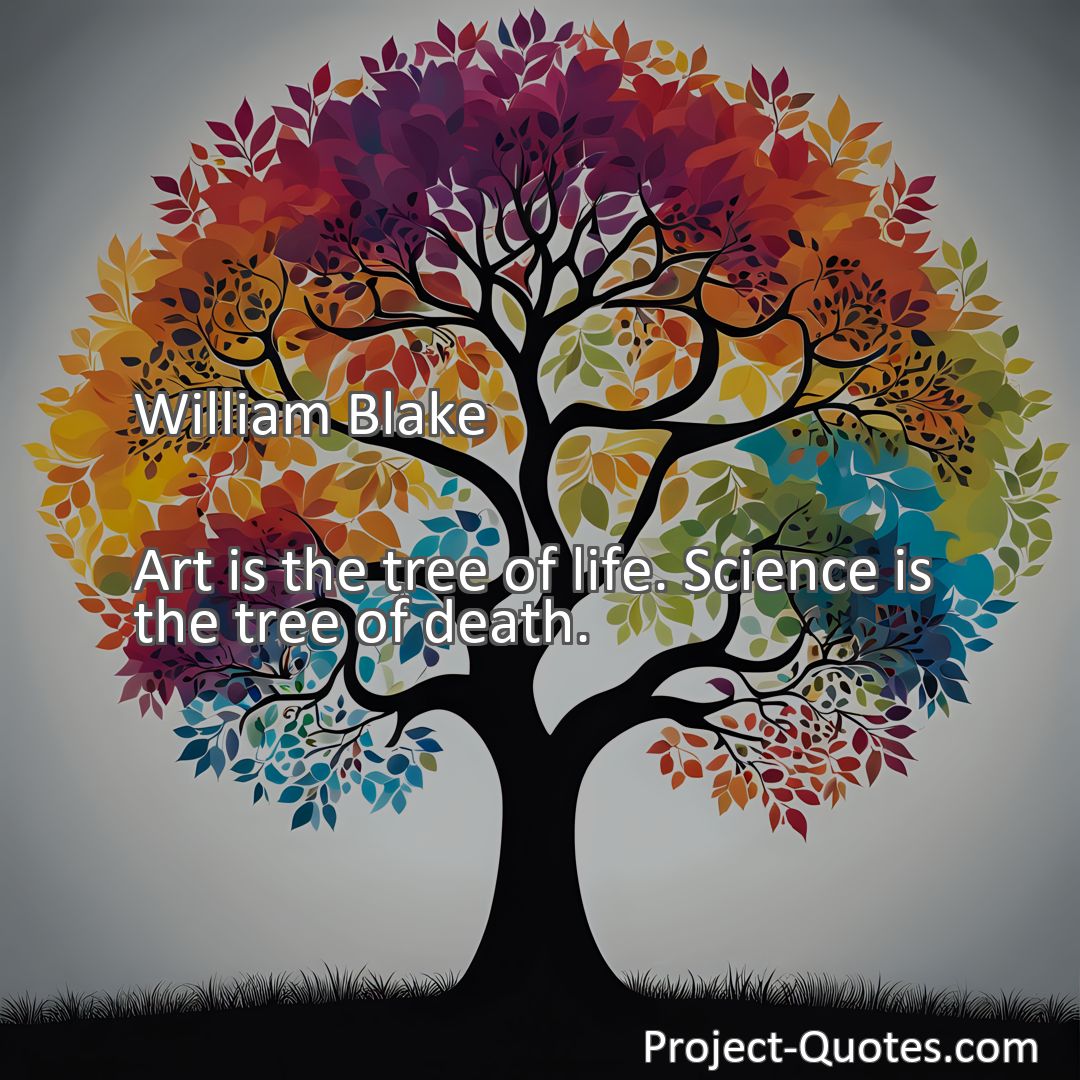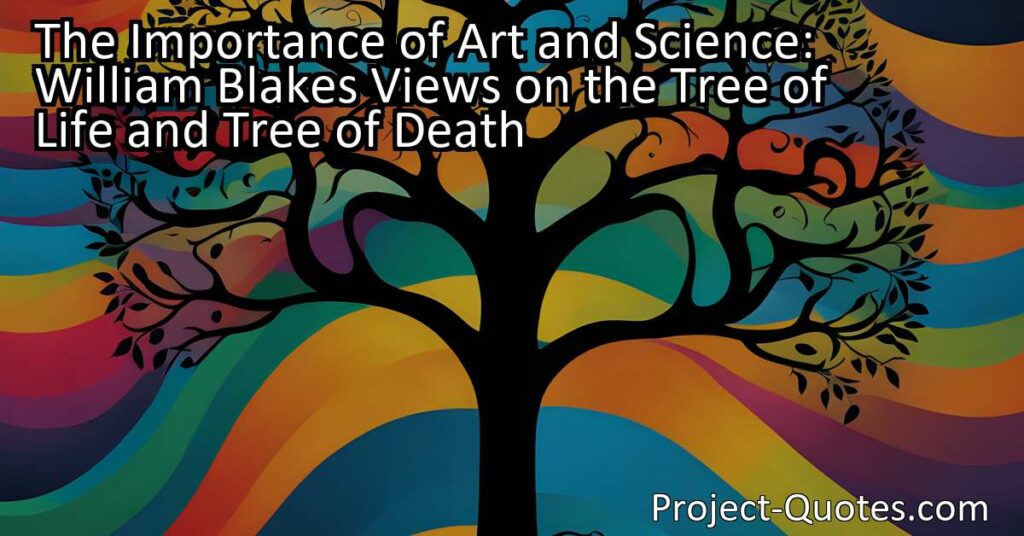Art is the tree of life. Science is the tree of death.
William Blake
Artist William Blake famously expressed his views on the importance of art and science in our lives, stating that “Art is the tree of life. Science is the tree of death.” This thought-provoking quote highlights the contrasting nature of art and science and encourages us to reflect upon their unique contributions to our existence. Blake’s perspective reminds us of the dynamic force of art, which brings life, beauty, and meaning into our world, while science offers knowledge, progress, and a deeper understanding of the natural universe.
Table of Contents
Meaning of Quote – Art is the tree of life. Science is the tree of death.
Have you ever stopped to think about the importance of art and science in our lives? How these two fields of knowledge shape and influence our understanding of the world around us? Well, the poet and artist William Blake famously expressed his views on this matter when he said, “Art is the tree of life. Science is the tree of death.” This thought-provoking quote highlights the contrasting nature of art and science and encourages us to reflect upon their unique contributions to our existence.
Art, according to Blake, can be seen as the “tree of life.” But what does this mean exactly? When we think of a tree, we often associate it with growth, vitality, and the interconnectedness of all living things. Similarly, art can be viewed as a dynamic force that brings life, beauty, and meaning into our world. It is through art that humans have the ability to express their emotions, thoughts, and experiences in a tangible and visual form. Whether it is through painting, poetry, sculpture, or any other artistic medium, art has the power to evoke emotions, provoke ideas, and challenge our preconceived notions about reality.
Through the centuries, art has been an essential part of human civilization, enabling us to explore the depths of our creativity and imagination. Artistic expressions have the ability to transcend time and cultural boundaries, resonating with people from different backgrounds and generations. From the intricate cave paintings of our ancient ancestors to the masterpieces displayed in prestigious galleries and museums, art reflects the diversity of human experiences and serves as a mirror to society.
Moreover, art has the unique ability to inspire us and provide solace in times of distress. Many individuals turn to art during difficult periods in their lives, finding comfort, healing, and a sense of belonging in its aesthetic creations. Whether it is listening to music, admiring a painting, or losing oneself in a compelling story, art offers a respite from the challenges of life, allowing us to connect with something larger than ourselves. In this sense, art can be seen as an essential component of our emotional and spiritual well-being.
On the other hand, science is often portrayed by Blake as the “tree of death.” This seemingly contrasting view of science might appear puzzling at first, but it points to the potential dangers and limitations inherent in the pursuit of scientific knowledge. While science undoubtedly has a profound impact on our lives, it can also be associated with the dissection, quantification, and manipulation of the natural world. In the quest for understanding the complexities of the universe, science sometimes reduces the beauty of nature to mere numbers, formulas, and equations.
Furthermore, the phrase “tree of death” might also allude to the unintended consequences that may arise from scientific advancements. Throughout history, scientific breakthroughs have undoubtedly improved our quality of life, revolutionizing medicine, transportation, and communication. However, there have also been instances where scientific discoveries have led to unintended negative consequences, such as environmental degradation, ethical dilemmas, and the spread of weapons of mass destruction.
While these potential drawbacks of science should not be ignored, it is important to note that science itself is a pursuit driven by curiosity, inquiry, and a desire to unravel the mysteries of the universe. Science, when used responsibly and ethically, offers immense benefits to humankind, promoting progress, innovation, and a deeper understanding of our place in the world. Through the scientific method, we are able to ask questions, test hypotheses, and build knowledge upon previous discoveries.
In essence, the contrasting views presented by Blake’s quote invite us to appreciate both art and science for their unique contributions to human existence. Art, as the “tree of life,” offers beauty, meaning, and emotional connection to our world, while science, as the “tree of death,” provides us with knowledge, progress, and a deeper understanding of the natural universe. Both fields have played essential roles in shaping human civilization and have the potential to inspire, challenge, and transform our lives.
Ultimately, the relationship between art and science is not one of opposition but rather one of mutual enrichment. As we continue to explore the wonders of the world around us, let us embrace the creative expressions of art and the rigorous investigation of science, for they both offer valuable insights into the complexities of our existence. Whether we find solace and inspiration in a beautiful painting or marvel at the intricate workings of the natural world, let us celebrate the tree of life and the tree of death, for they are intertwined branches on the tree of human knowledge.
I hope this quote inspired image brings you hope and peace. Share it with someone who needs it today!


